Hunting lodge Pait
On the eastern coast of the Curonian Lagoon, in the former Elchniderung district (Moose Valley, now the Slavsky district of the Kaliningrad region), there is a hunting lodge that became famous during the time of Kaiser Wilhelm II. Now this hard-to-reach place is little known, but it cannot go unmentioned when talking about the history of hunting in East Prussia.
The Pait forestry was first mentioned in 1886, but it is likely that a hunting lodge was located in these places much earlier. It is known that there was a small settlement on the Pait stream , which later gave the name to both the forestry and the hunting lodge. This settlement was later acquired by the Forestry Department in exchange for a plot of land in another area, so that, in the end, these lands received the status of forest hunting grounds. And in 1886, moose began to be brought into the forestry and their population was restored here.
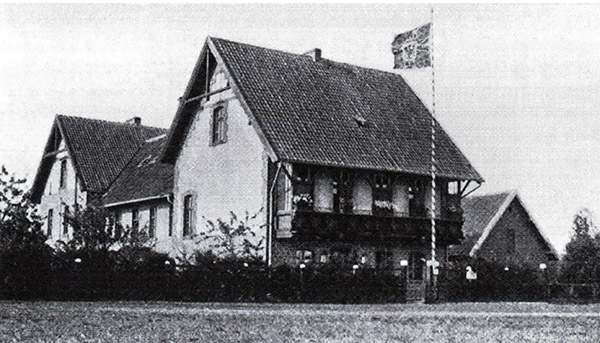
In 1904 (18-20 September) Emperor Wilhelm II came to the Tawellningken forestry for the first time to hunt . The result of his hunt was the harvesting of two so-called "second class" elk with 14 and 12 antlers, i.e. without large spade-shaped antlers. At the same time, after the Kaiser's hunt, between 1904 and 1905, one wing of the Pait hunting lodge was built on the site of the old forestry . A second wing was added a little later, since there was not enough space for all the staff. The forester and the elk ranger moved into the new forestry building.
From September 12 to 14, 1910, the Kaiser hunted elk in these areas again and stayed in the already built hunting lodge. Then he managed to get a large elk, with antlers with 18 branches. In total, Wilhelm got four elk (two of which had spade-shaped antlers) and one goat (a male roe deer). The Kaiser arrived for the hunt by water, on the government steamship Anderson, along the Curonian Lagoon and the canal through Seckenburg ( now the settlement of Zapovednoye) to Inse ( now the settlement of Prichal), and from there by road to Pait .
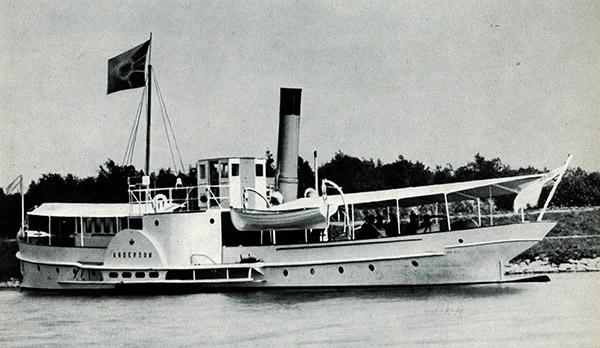
It is widely believed that the Kaiser went on three moose hunts in Tavellningken, the second time in 1907. However, the Kaiser's hunting schedule from 1894 to 1916 does not include a hunt in the Elchniederung district that year. This error is due to an incorrect caption on this photo.
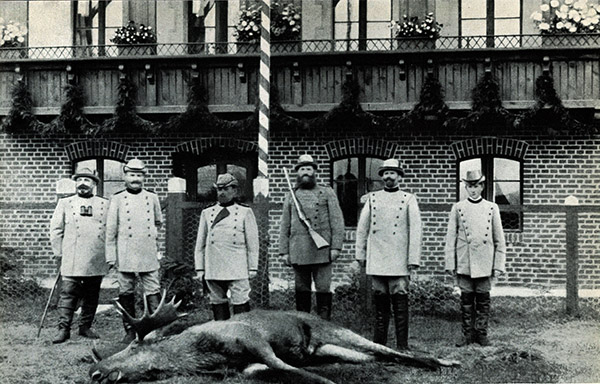
"From Emperor Wilhelm II. In 1907, he began to walk along the path towards the Jagdhaus Pait; dahinter forstbeamte. 2. vl Oberförster Meyer, 3. v. I. Landforstmeister Wrobel»
However, according to the hunting schedule in the Elchniederung area, no elk with antlers were hunted between 1905 and 1909.
Kaiser considered moose to be, although not very interesting, but at the same time worthy prey. In total, he had killed 12 moose during his 40 years of hunting experience.
The animal artist Richard Friese visited this area more than once to sketch large elks, as did the sculptor Ludwig Vordemaier, who sculpted the future “Gumbinnen elk” from life .
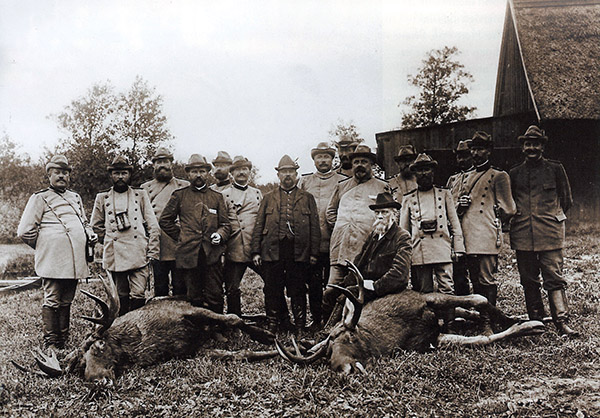
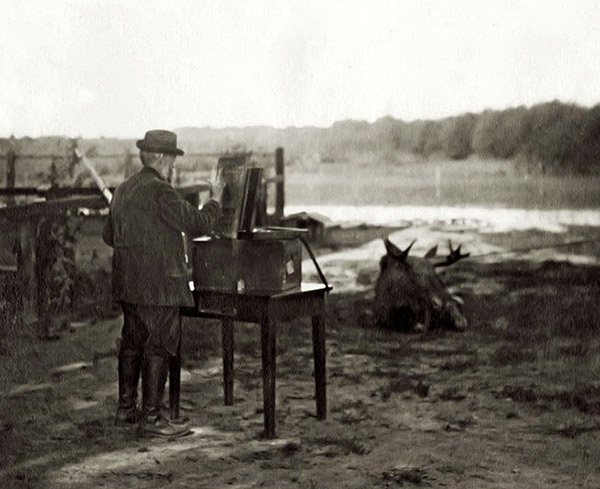
Since the beginning of the century, forestry workers have been working continuously to increase the number of moose, and eventually, by 1914, the Tavellningken forestry became the leading "moose area" in the province of East Prussia. The moose population here numbered about 500 animals.
On September 16, 1912, the then Prussian Minister of Agriculture and Forestry, Baron Clemens von Schorlemer, killed a large elk with 22-pointed spade-shaped antlers. They were recognized as the largest trophy at the hunting exhibition in Düsseldorf and became the pride of the East Prussian "elk valley". A copy of these antlers then hung in the hall of the Pait hunting lodge , serving as an object of admiration and envy for many hunters.
On October 4, 1913, Prince zu Fürstenberg also hunted an elk with 22-pointed antlers in this area.
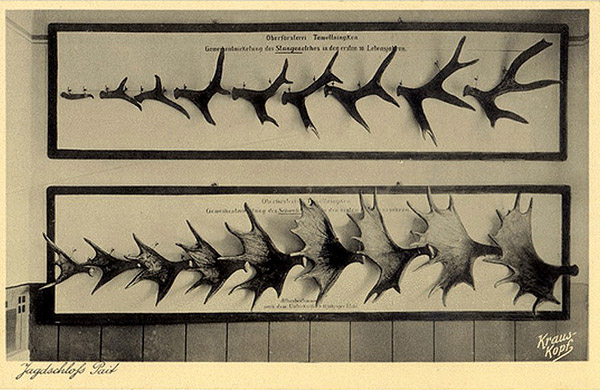
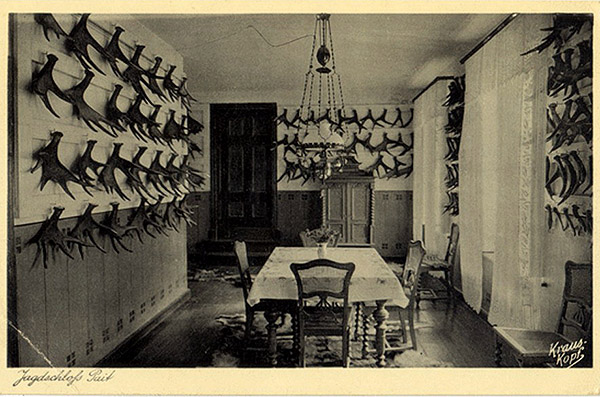
The Pait hunting lodge kept discarded branches of antlers and shovels, which could be used to track development and growth. The forester Meyer began collecting them, and the forester Orlowski continued this tradition.
The Tavelningken forestry, to which the Pait hunting lodge belonged , was headed from 1904 to 1914 by forester Meyer, nicknamed the "philosopher hunter". He served in the Guards battalion of rangers and was then transferred to East Prussia from the province of Brandenburg. Thanks to his care and participation, the number of elk, powerful bulls with branched shovel-shaped antlers, was increased. His services were noted during the highest visit of the Kaiser. Meyer created an excellent hunting infrastructure throughout the forestry, high towers, willows and acacias were planted, and wide roads and bridges were built.
The hunting lodge itself was directly managed by foresters Barshat and Knofelsen from 1897 to 1909.
After the end of the First World War, poaching increased in Elchniederung, which had a significant impact on the elk population. The first government hunter in the "elk valley" after the war was Prime Minister Otto Braun. He became the new patron of the "elk valley". He came to the Pait hunting lodge several times for elk hunts, during one of which he got a powerful elk with 20-pointed spade-shaped antlers. But unfortunately, the fruits of his care for the elk population were reaped by others.
At that time, the forestry was headed by forester Orlovsky, who continued the work of forester Meyer to increase the number of elk and maintain order in the “elk valley” entrusted to him.
In the autumn of 1933, Hermann Göring came to the "elk valley" for the first time to hunt. On his first hunt, he managed to take three powerful elks with shovel-shaped antlers. And in the autumn of 1934, he got three more elks, one of which had antlers larger than Baron Schorlemer's trophy - 24 shoots, which were called " Großmächtige von Gilge " (Giant of Gilge).
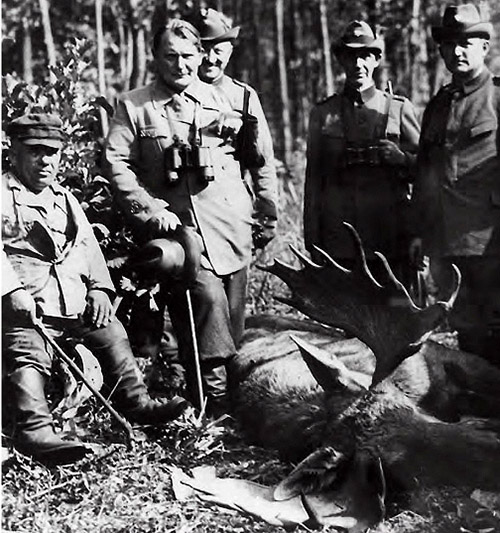
Then, in 1934, by order of Hermann Goering, work began on the restoration and expansion of the hunting lodge, as well as the construction of new buildings.
In the years before the start of the Second World War, the forestry was headed by forester Breyer, who replaced forester Orlowski, who had fallen into disgrace with Goering and was transferred to Pomerania.
The last forester and caretaker of the Pait hunting lodge was Heinrich Weber, who, together with the moose caretaker Kramer, left the "moose valley" in 1945.
With the arrival of Soviet troops, the German history of the Pait hunting lodge ended .
In the post-war years, the number of moose decreased again due to poaching. The hunting lodge was used for various purposes and stood abandoned for a long time.
The Pait Historical Hunting Lodge Foundation was created to try to restore and renovate the old hunting lodge in order to create a base for hunting and ecotourism.
In the mid-2000s, the hunting lodge finally began to function as a recreation and hunting base, but currently the complex of buildings is up for sale.
Sources :
Gautschi A. Wilhelm II. and the work: Kill and kill the young German Emperors. Nimrod, 2000.
Gautschi A., Rothe W. Wald, Jagd and Kriegsverdlovsk-Kamchatsky: Historical and Cultural Heritage of the 1925-1945 Period. Neumann-Neudamm Melsungen, 2012.
Gautschi A., Siemers W., Vollmer-Verheyen H. Richard Friese — his life? your Art. Neumann-Neudamm Melsungen, 2013.
Knopf V. Neumärker U. Görings Review: Justice and Politics in the Roman Empire. Ch. Links: Auflage. 2007.
Bildarchive
